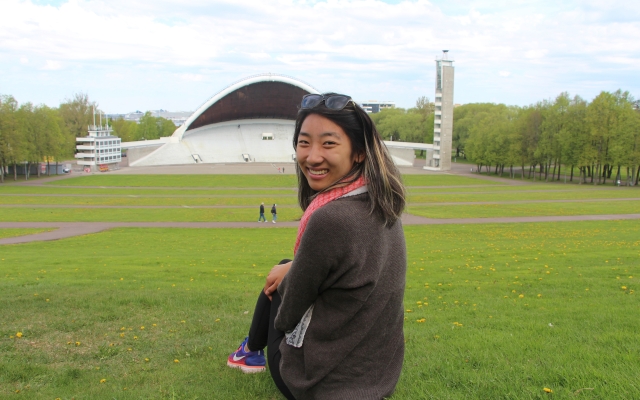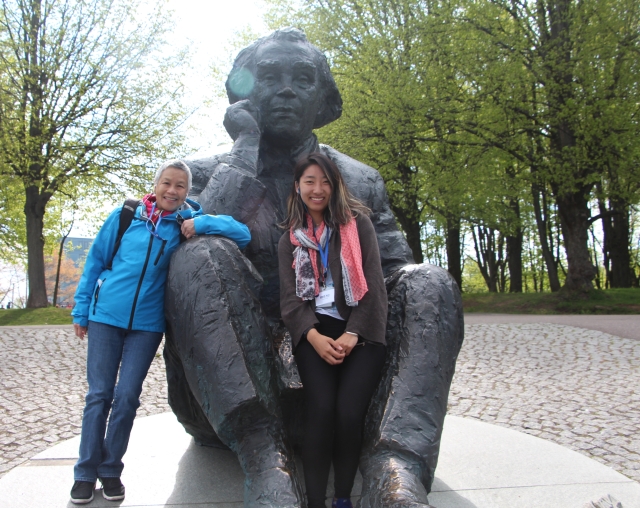Can a Country Sing to Freedom?
Before visiting the Baltics states (Estonia, Latvia, Lithuania), it never crossed my mind.
I also don’t recall ever learning in school about…
- The Baltic States.
- Estonia being invaded by the Germans, Danes, Swedes, and Slavs.
- The 50 year Soviet occupation of Estonia, which the US refused to recognize.
- Estonia’s fight for independence against the Soviet Union began with this unique weapon of choice: singing.
Zip. Zilch. Nothing.
Unfortunately, this was all new to me. This is where traveling becomes oh so powerful and eye-opening.
For decades, this part of the world was tucked away and forgotten (for me at least). I had no clue that this small, but mighty country of 1.3 million people, peacefully protested and sang their way to freedom.
“Imagine the scene in ‘Casablanca’ in which the French patrons sing ‘La Marseillaise’ in defiance of the Germans, then multiply its power by a factor of thousands, and you’ve only begun to imagine the force of ‘The Singing Revolution‘.”
Table of Contents
Estonian Song Festivals
In 1869, Estonians held their first song festival in Tartu, and thus began a tradition called Laulupidu, where tens of thousands of singers from choirs all over the country would perform on stage together. All at once! Today, Laulupidu is held at the Tallinn Song Festival Grounds (Lauluväljak) in Estonia’s capital, Tallinn, every 5 years.
Mark your calendars: The next Estonian Song Festival will be Jul 5-7, 2019!
Even before Estonia’s song festivals, music has been a huge part in preserving Estonian language and culture, and especially Estonia’s traditional folk song form called regilaul.
During the Soviet occupation which lasted for 50 years, it was a key part to gaining their independence in 1991 (which occurred less than 30 years ago).

“Mu Isamaa On Minu Arm”
Mu Isamaa On Miun Arm was originally sung at the very first song festival in 1869. It was written by Lydia Koidula and translates to “Land of my Fathers, Land That I Love.”
During the Soviet occupation, Mu Isamaa On Miun Arm song was not allowed because it represented hope for Estonia’s independence. Instead, choirs were forced to sing Russian songs about Marx, Lenin, and Stalin.
In the 1960s while under Soviet rule, singers began defiantly singing two different national anthems: one to appease the Soviet Union and a second written by the Estonian composer, Gustav Ernesaks, who took the lyrics from Lydia Koidula’s older national poem and wrote new music for Estonia’s unofficial national anthem.
In 1969, the song was deliberately sung in their native tongue even though the Soviets told them to stop. Despite attempts to quell the singers, the Soviets were unable to silence over a hundred thousand singers (!!!) as they proudly sang the song over and over again – a huge symbol of defiance to the Soviet Union.
Peaceful, and beautifully sung, defiance.

The Power of Glasnot
In 1985, Mikael Gorbachav came into power and introduced new policies inspired by his Western neighbors, including perestroika (economic restructuring) and glasnot (free speech). Gorbachav did not prepare for the unintended consequences, as Estonians began to test the limits of glasnot to gain their independence.
For instance, during a protest for an environmental issue, Estonians creatively waved three different colored banners (blue, black, and white) to represent their flag. During Soviet rule, it was technically illegal to own an Estonian flag.
New songs surfaced during the artistic “Great Awakening” of the 1980s which called for Estonia’s independence. And because of glasnot, Soviet authorities couldn’t do anything.
Free speech is pretty powerful.
During a coup d’état in 1991, the Estonian people used their peaceful songs and voices to call for their freedom against threatening Soviet guns and soldiers.
On September 6, 1991, the Soviet Union officially recognized the independence of Estonia.
Tayzau’s note:
History is complex. The struggle of the people of Estonia cannot be summarized in 500 words. I’ve shared one perspective about The Singing Revolution, but recognize this is not comprehensive. Additionally, the 50 years of Soviet Occupation was only a sliver of their struggle against centuries of invasions and occupations.
Even so, learning about the power of their peaceful protest left me in awe and deeply conflicted about how little I knew. It moved me to want to learn more about their resilience and strategically peaceful protest.
You and I both can continue to learn more here:
READ more about the The Singing Revolution here.
WATCH the trailer for The Singing Revolution documentary here.
LISTEN to the songs of The Singing Revolution here.
*All facts came from www.singingrevolution.com or information I personally learned on my trip to Estonia.